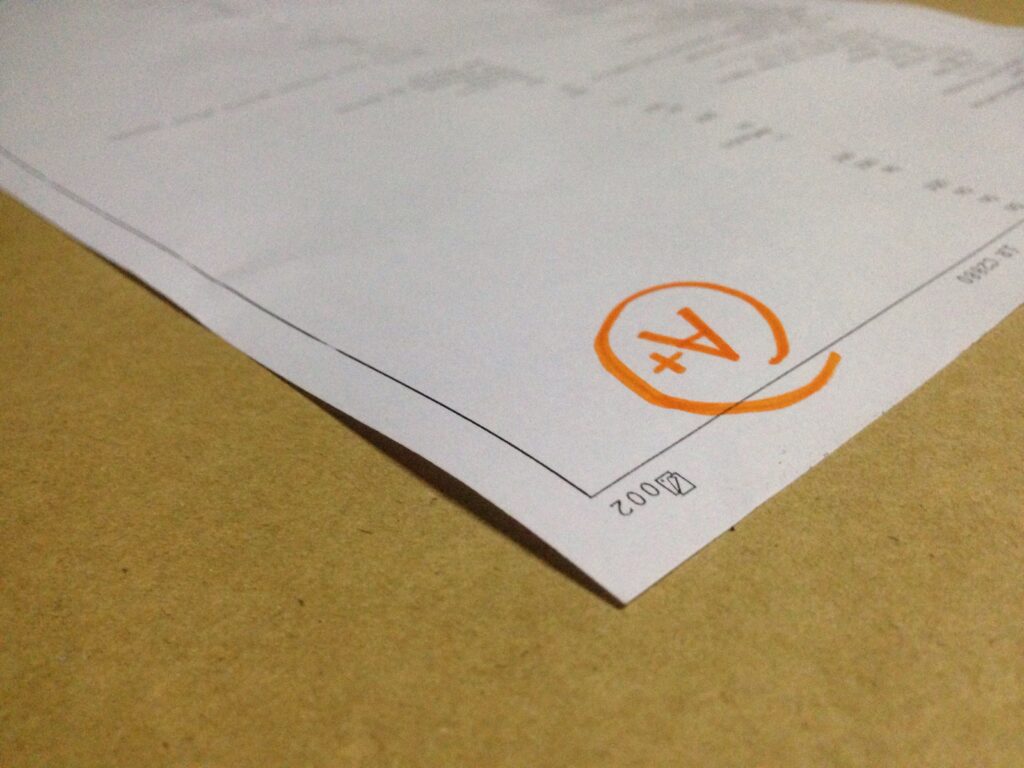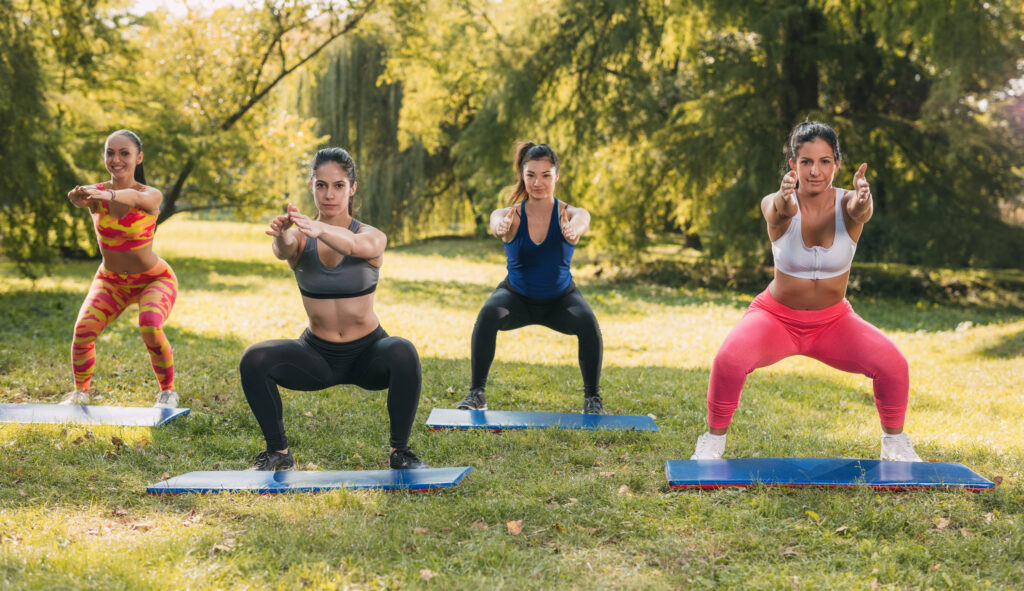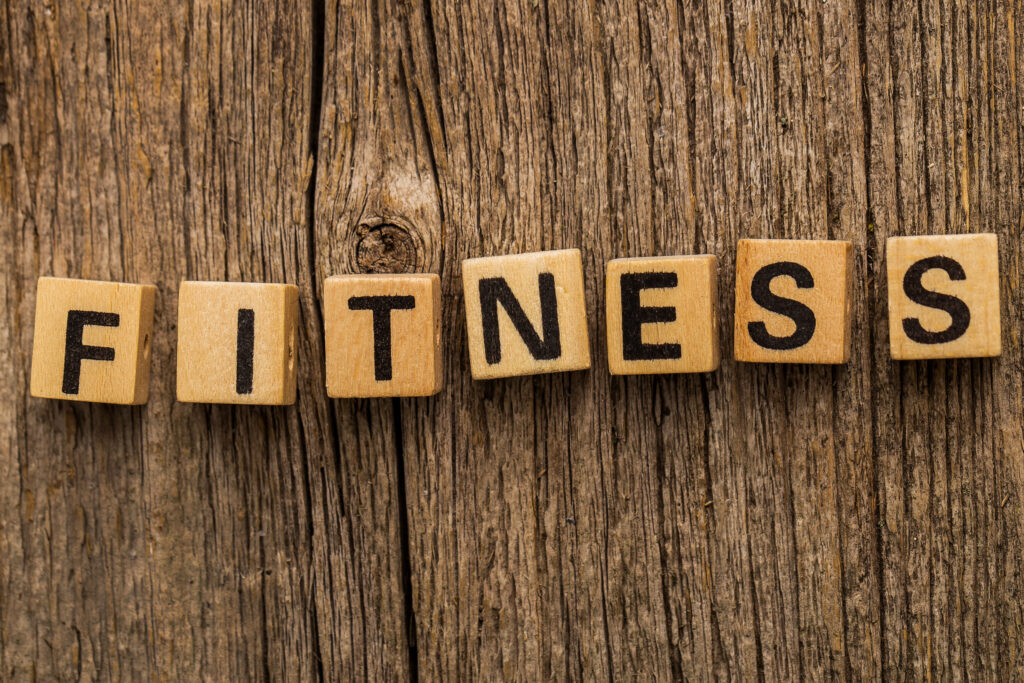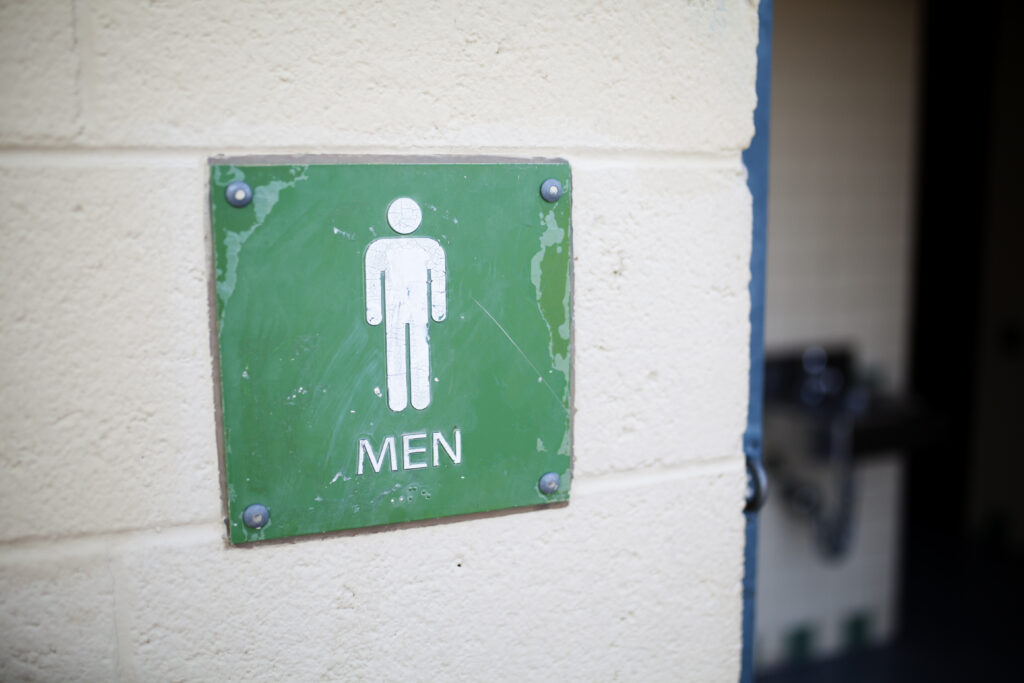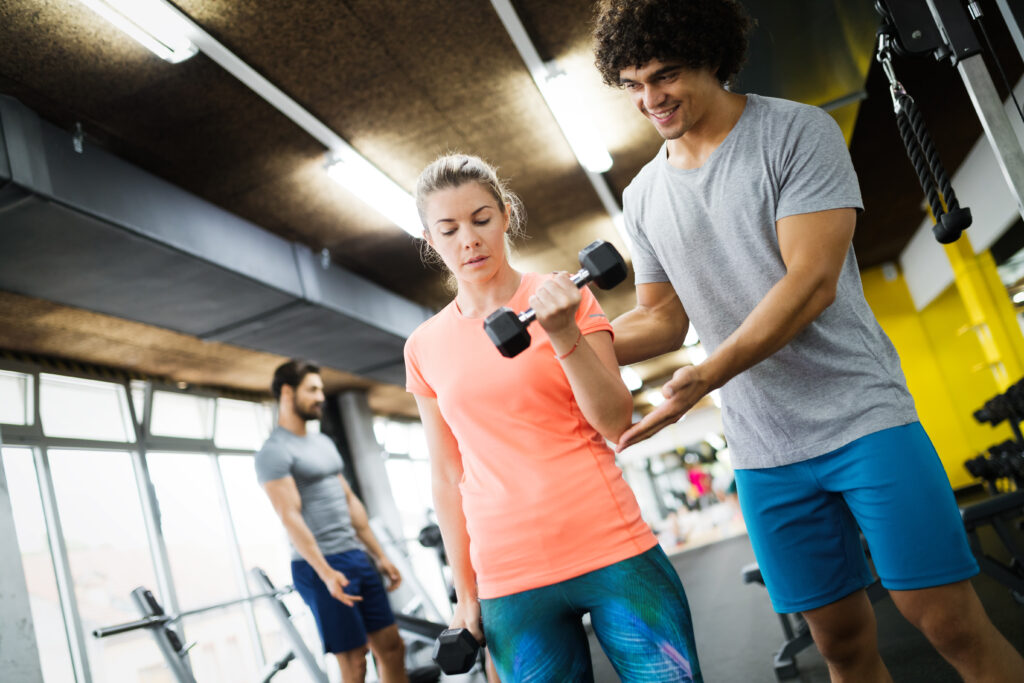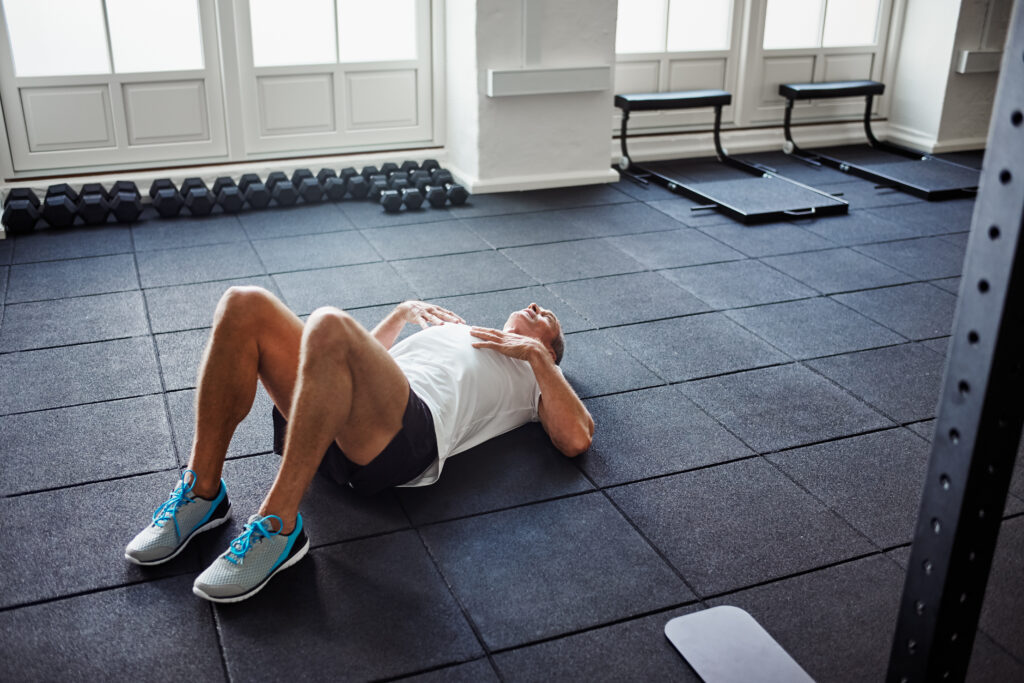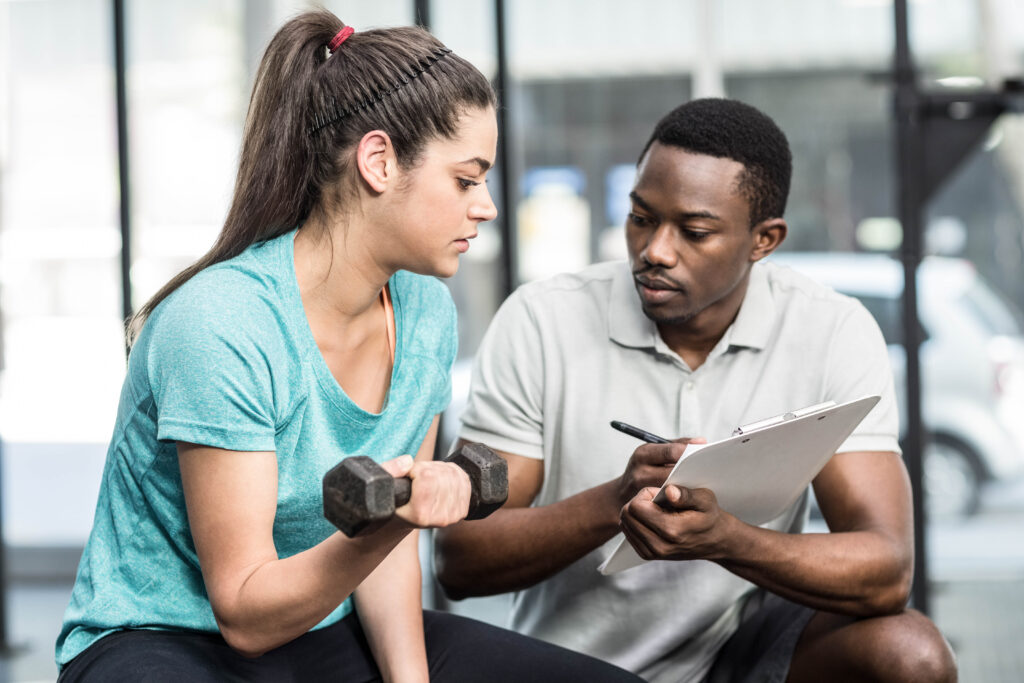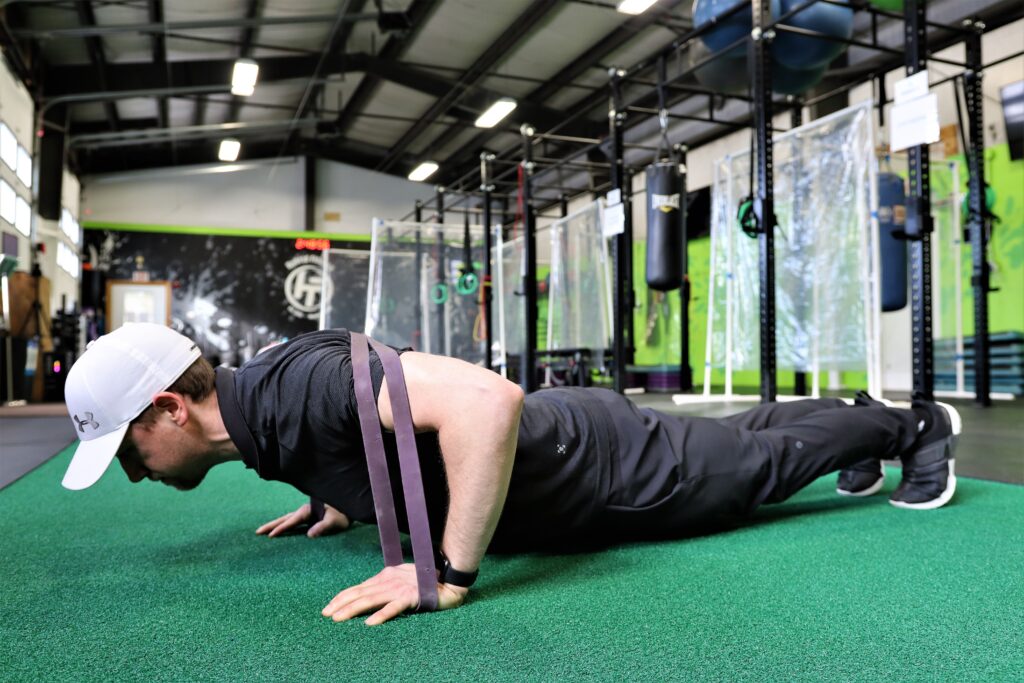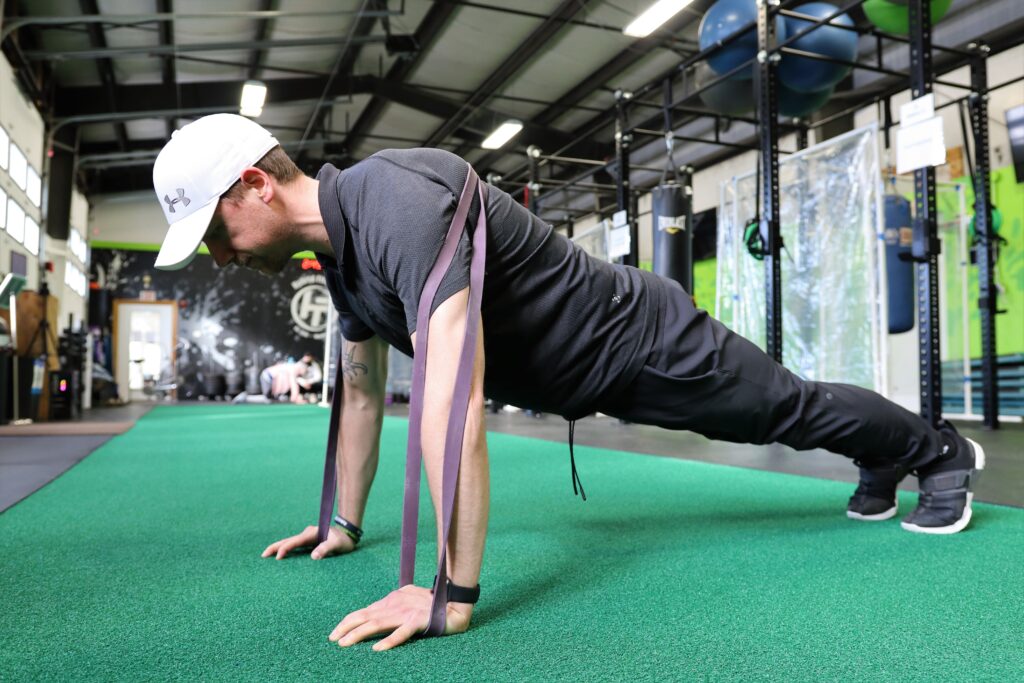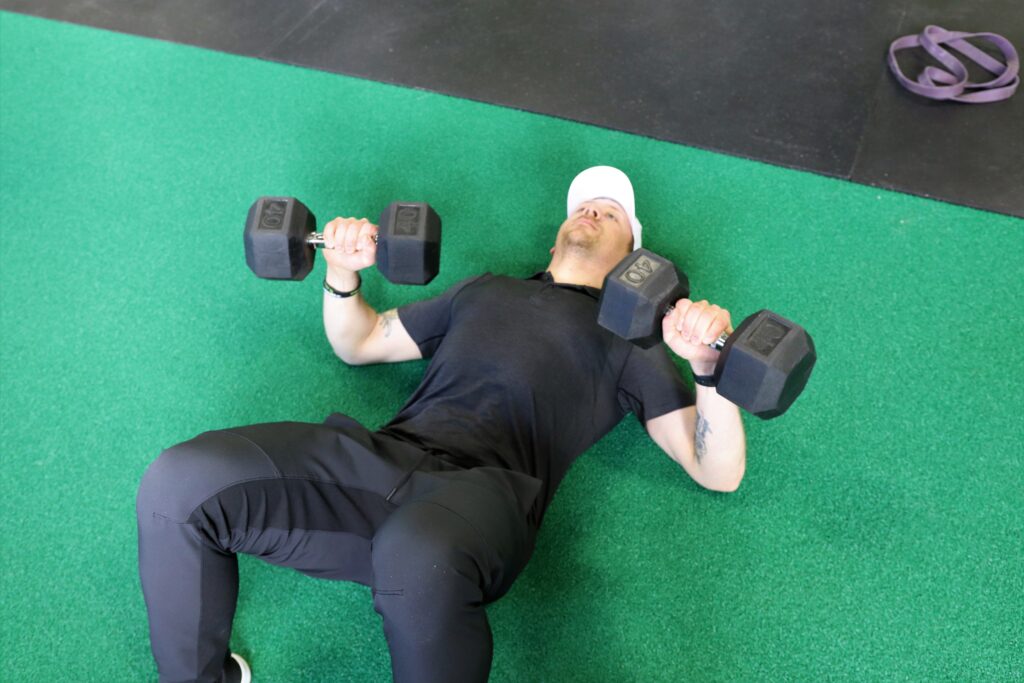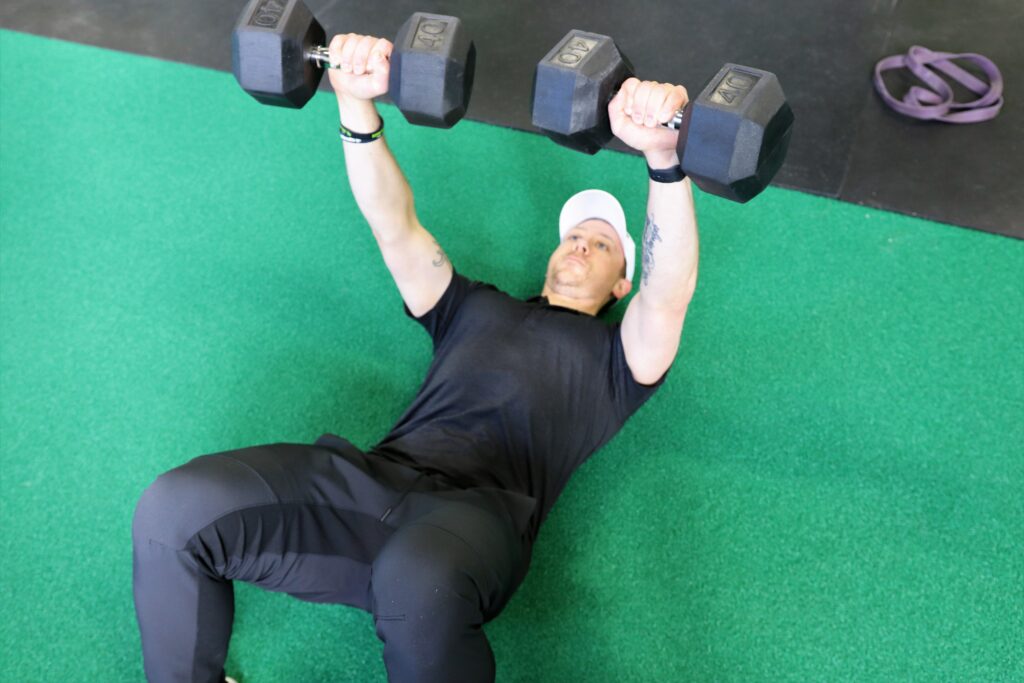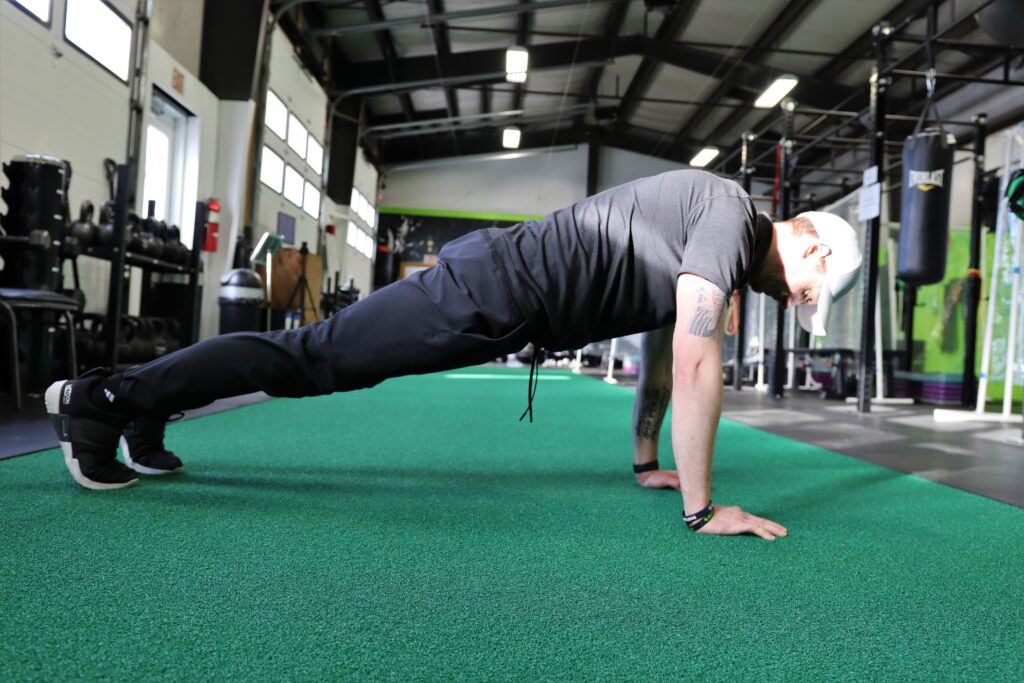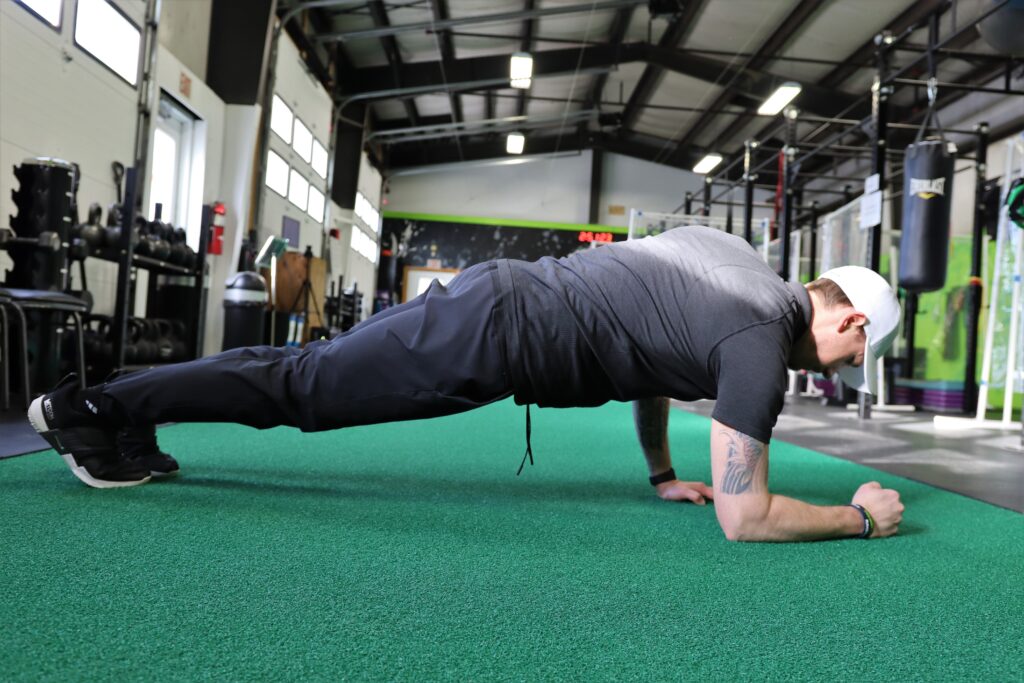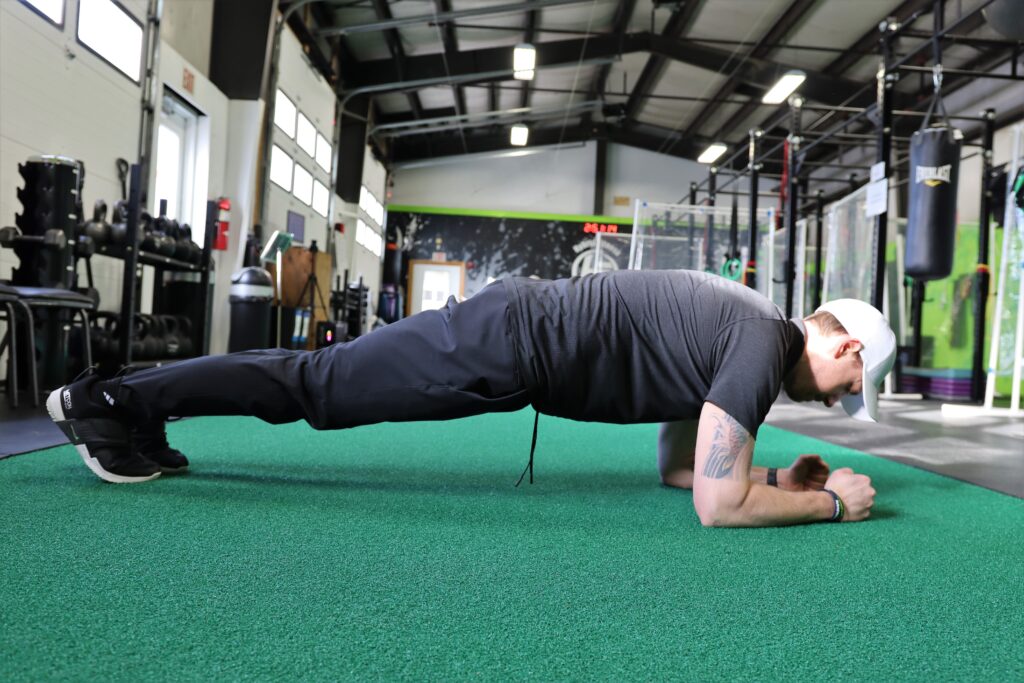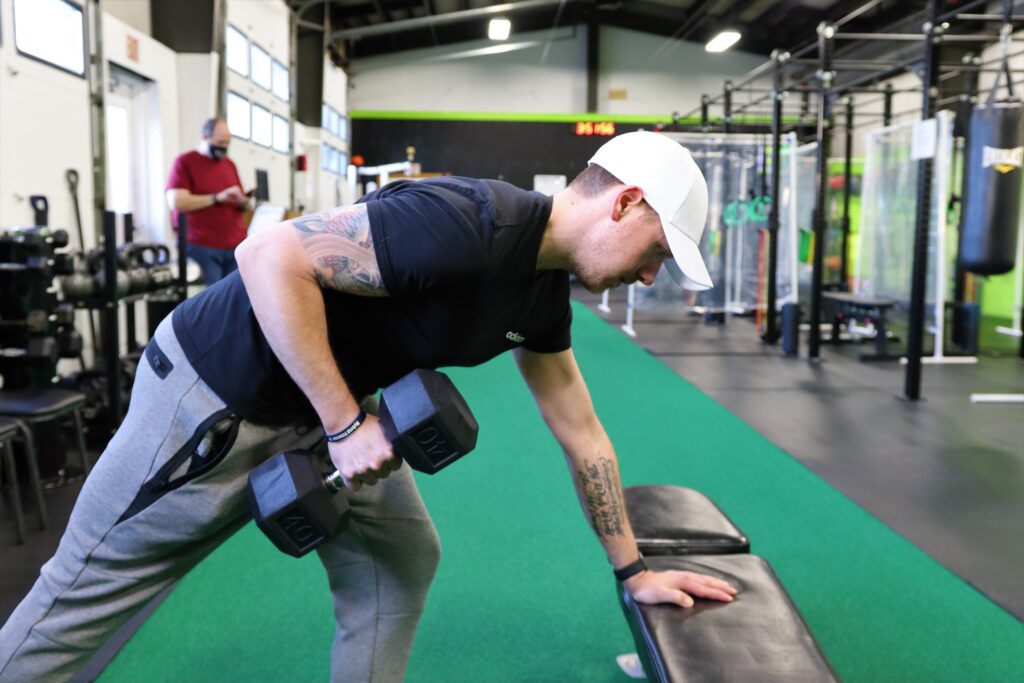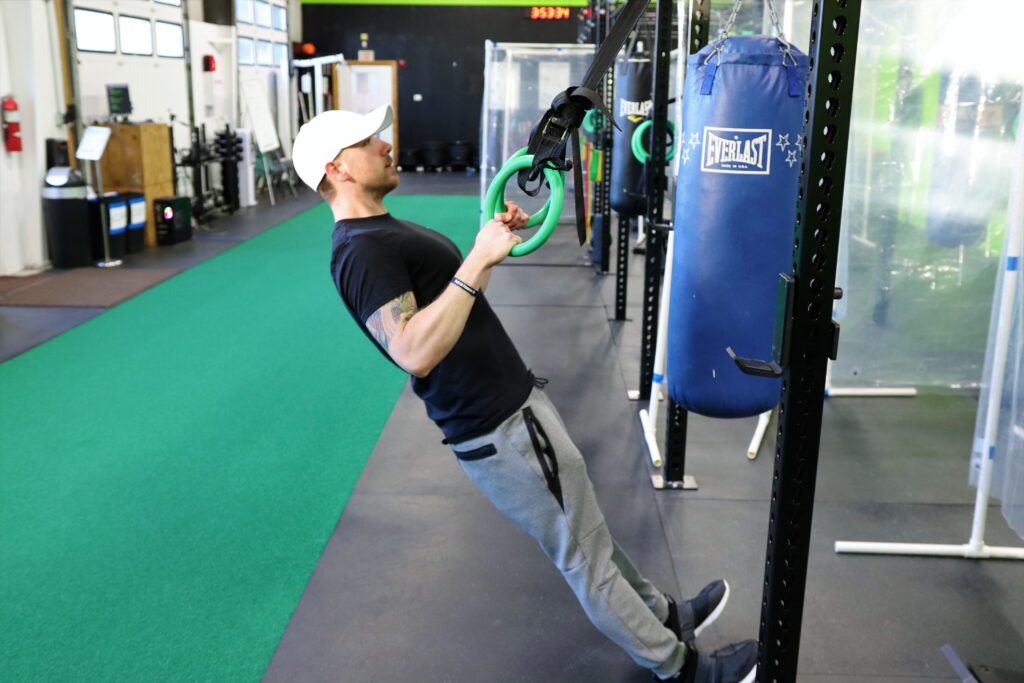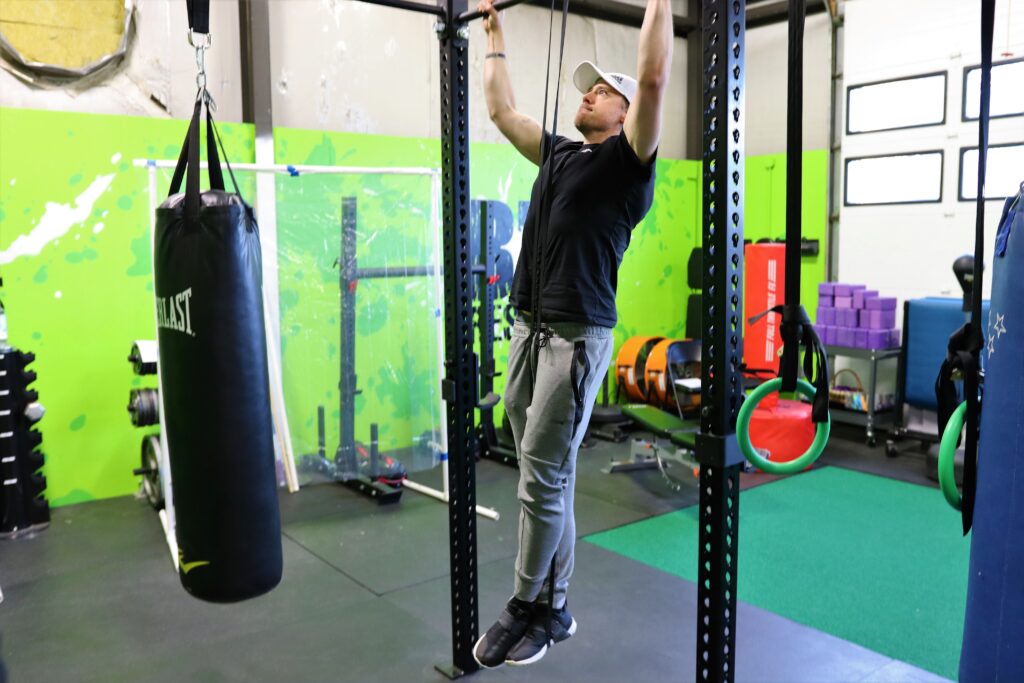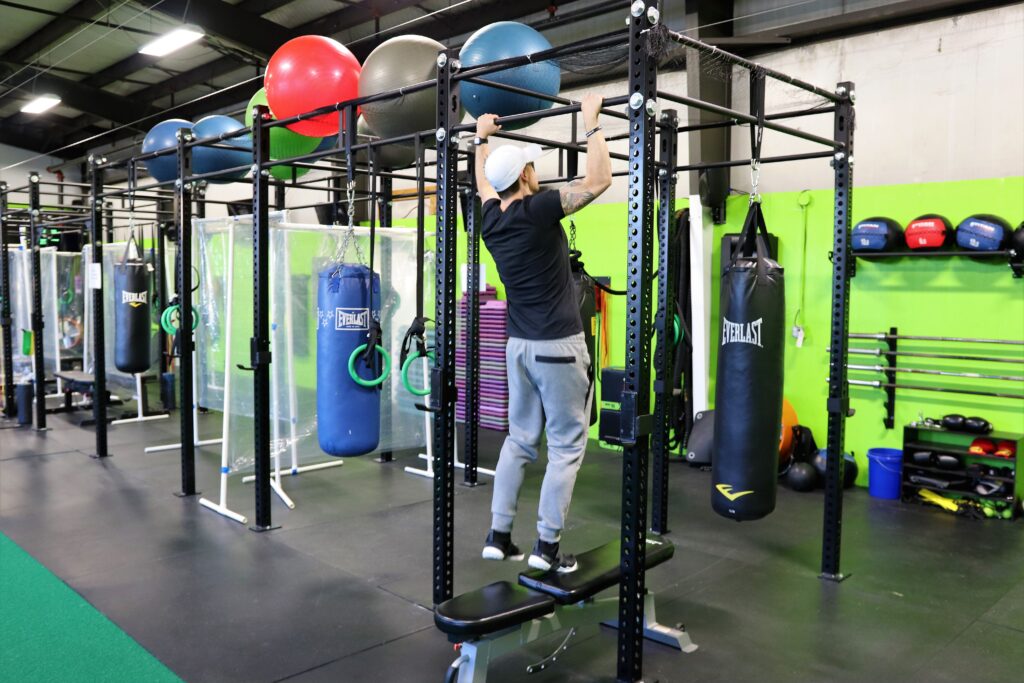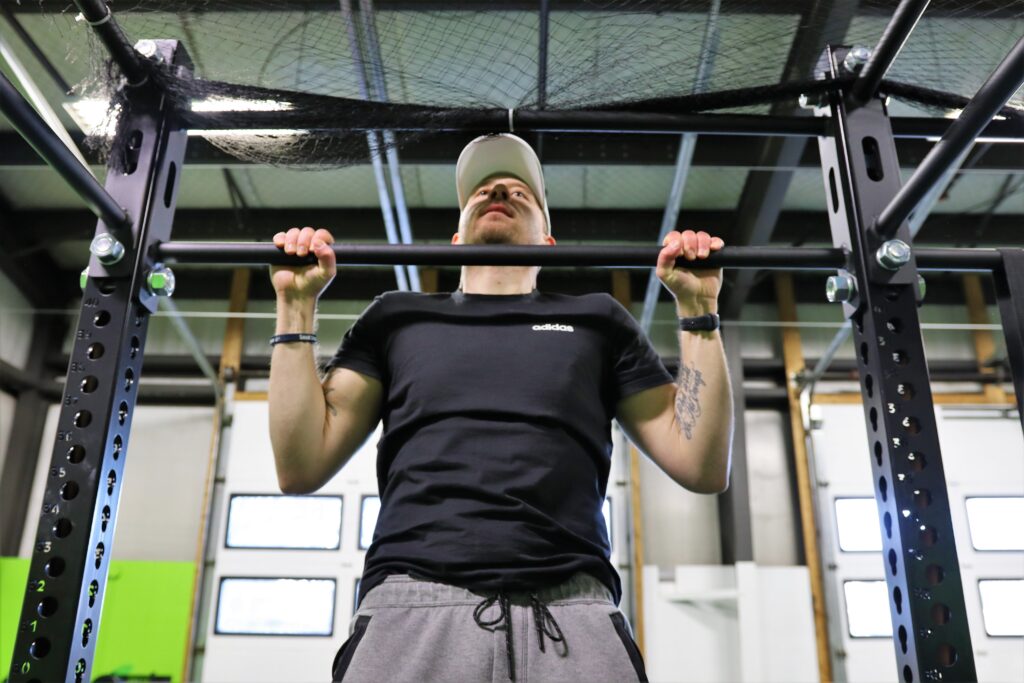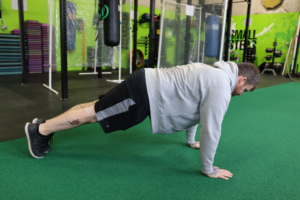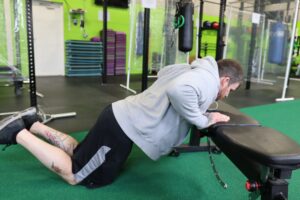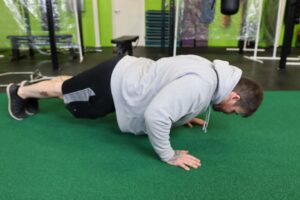January 18, 2022
Why I love Planet Fitness (but wouldn’t send my Mom there)
It’s been 6 weeks now since my workout partner, Dusty, and I have been hitting our workouts at Planet Fitness…
It’s been comical because I keep seeing people I know who look at me confused and ask:
“Wait, you own Hybrid Fitness, but you’re here? Why? Is Everything alright?”
And the answer is “YES!”
Everything is alright!
In fact, I have actually loved going to Planet Fitness, and here is why!
I love Planet Fitness because It’s everything that Hybrid Fitness isn’t.
– At Planet Fitness you do everything on your own – at Hybrid everything is guided by an experienced coach
– I got my Planet membership 4 months ago. When I didn’t go for an entire month, no one ever reached out to me to see why or how I was doing. If you miss consistent sessions at Hybrid Fitness, we text or call you to check in!
– At Planet, there’s a good percentage of young adults wearing very revealing clothing. At Hybrid, we rarely ever see that.
For me personally, I like those features because I enjoy doing my own workouts (And feel confident I can do them safely and effectively). I’m also motivated by seeing others’ physiques because it inspires me to work harder – I don’t get discouraged by it!
So why did Hybrid Fitness end up the way it is?
It’s that way because I didn’t create Hybrid Fitness for me (a 26 yr old, mildly ego driven ex-athlete)
I created it for my sister, my mother, and my father.
I created it for those who haven’t felt welcomed at a gym before (or even felt left out!).
I created it for those who need and want a little extra accountability to help them succeed!
And I created it for those who do better with instruction and coaching, and don’t have time to get injured!
If that’s what you value, too, I highly recommend you check out Hybrid Fitness! (We’ve got a brand new 6 week challenge going on now -> click here to learn more!)
But if you don’t as much and are like me… then Planet Fitness is the right fit for you!
Neither is right or wrong, it’s just preference!
And by the way – we have a handful of members to go to both, and I think that is awesome!
So anyways, this is why I love Planet Fitness, but would never send my mom there.
Have a great day,
Love,
Coach Hunter
#SmallStepsBigResults
Brand New 6-Week Challenge >> https://joinhybridfitness.com/application-form

Hunter grew up using fitness as a way to boost his low self-esteem. This led him to later found Hybrid Fitness in 2014, where him and his team create a fun, safe training environment for busy adults looking to better their health without doing crazy crash diets or excessive burpees.
August 2, 2021
Pelvic Floor Rehabilitation: The Nitty Gritty with Lee Ann Dinofrio, PT
Afraid to do jumping jacks at the gym?
Scared to sneeze or cough in public?
Always scouting for a restroom?
If having a weak pelvic floor is preventing you from having fun and getting the exercise your body needs, then this article is for you.
This interview with Lee Ann Dinofrio will clear up questions about pelvic floor dysfunction that you are too timid to ask.
Time to Share the Best Kept Secret in Midcoast Maine
Lee Ann Dinofrio is a physical therapist at Pen Bay Medical Center in Rockport, Maine. She specializes in pelvic floor rehabilitation.
Lee Ann is known as the best kept secret in Midcoast Maine because most people do not know that there is this kind of valuable help available for those suffering with pelvic floor dysfunction.
First, your pelvic floor is often referred to as the bowl or sling that holds the bladder, vaginal cavity, uterus (women), prostate (men), and rectum, which is the end of the large intestine that stores feces.
Lee Ann explained that pelvic floor rehabilitation is a treatment plan to strengthen the three layers of pelvic floor muscles to address issues such as, urine and fecal leakage, pelvic pain and postpartum issues.
Yes, you read that correctly. There are not one, not two, but three layers of muscle that make up your pelvic floor whether you are female or male. That anatomy is the same.
All three layers need to be strong for easy daily function to prevent embarrassing, inconvenient and possibly even painful incidents.
Disclaimer: If you feel you are in need of pelvic floor rehabilitation, please seek professional advice before following the information provided here to address your particular issues.
Visits with a Pelvic Floor Therapist
The first step to rehabilitation is evaluation. The evaluation visit is about 90 minutes and is an intimate procedure to assess the pelvic floor issue.
We say intimate because the only way to assess pelvic floor issues is vaginally or rectally.
Visits following the evaluations are about 45 minutes once per week for approximately 6 weeks. If more time is needed, then a patient’s health insurance is contacted for an extension.
Be ready for some homework
For progress to occur patients need to do their homework. Maybe you thought you were done with school, but now you are given what may be the most important homework ever to help you function easily in daily life.
Fortunately, this homework is very different than the high school algebra you speculated never using in “real” life.
This homework will help you EVERY day and involves exercises to strengthen, or even relax in some cases, the muscles of your pelvic floor.
Contracting these muscles with specific exercises for your pelvic floor are essential for addressing pelvic floor dysfunction. It works just like if you perform bicep curls to strengthen the bicep muscles of your arms only it’s muscles you cannot see.
Pulling the Drawstring
You may have already guessed that Kegels are the go-to exercise for pelvic floor strengthening and you’d be right for most cases.
Think of it as using your pelvic floor muscles to pull up and in as if lifting a drawstring bag in your abdomen.
What’s marvelous about Kegels is that you can do them anywhere at any time because nobody can tell if you are doing them. The muscles are internal. Nobody notices.
There are many variations to contracting your pelvic floor muscles.
1) Your therapist may suggest doing what is known as quick flicks, which are contracting your pelvic floor muscles quickly and letting them relax without holding them contracted.
2) Another option is to contract the muscles and hold for a few to several seconds before relaxing.
An A+ pelvic floor student
Lee Ann and other pelvic floor therapists prescribe exercises that benefit each patient depending on their specific needs.
To get on the honor roll with your therapist and benefit yourself the most, it’s imperative that you perform your therapist’s prescribed exercises correctly and consistently.
For Lee Ann’s recommendations for exercises fill out the form below!
No Squatting Allowed?
Some exercises may have to be put on the back burner for a while. Your therapist may suggest being careful with squatting because your pelvic floor muscles relax when performing a squat.
You may be thinking, “How am I going to build my quads and lift anything if I’m not supposed to squat?”.
Well, to be more precise, if you can contract your pelvic floor by performing a Kegel while simultaneously squatting, then you may be good to go.
Until then, working on strengthening the pelvic floor muscles needs to happen before squatting in the gym. In lieu of squats, consider wall sits and glute bridges.
Check out how to do proper glute bridges in our free guide (just fill out the form at THIS LINK to gain Instant Access)
Why do you have a weak pelvic floor?
You can experience a weak pelvic floor for a multitude of reasons.
Is it in your genes?
There isn’t significant research to support that having a weak pelvic floor is genetic. However, Lee Ann has seen in the history of her patients that there does seem to be a connection, such as a daughter, sister, mother, aunt, grandmother, etc. who all have suffered in some way from weak pelvic floor muscles.
Have you housed a human?
Pregnancy certainly can take its toll on pelvic floor muscles while carrying a child and whatever happens during the birth, either vaginally or cesarian section.
Muscles that are torn, cut or damaged in some way can mean that those muscles are not as strong as they were prior to pregnancy.
Retired muscles?
Our age may be another factor contributing to a weak pelvic floor. As we age our muscles get weaker due to wear and tear and overwork.
How is your fitness level?
Similar to all other muscles in our bodies, muscles that we do not use and do not continue to strengthen get weak and cannot perform their responsibilities appropriately.
Sufficient exercise each day is important for the muscles of your pelvic floor and your overall health.
What can I do to prevent weak pelvic floor muscles?
Exercise can make a significant difference in how well your pelvic floor muscles perform. The phrase “use it or lose it” comes to mind. If you do not exercise the muscles in your body, including your pelvic floor muscles, then the strength of those muscles can decline over time.
An option for preventing severe issues as a result of a weak pelvic floor is to seek out a therapist before the situation interrupts your daily living activities. Maintenance and consistency are key to keeping the pelvic floor strong.
I want results today!
Once patients take the leap and initiate a visit with Lee Ann, they tend to want results on the first visit. However, pelvic floor issues take time and dedication to remedy.
That said, most patients feel better emotionally and mentally after the first visit because they now know what the issue is and that there are steps to follow to strengthen their pelvic floor.
Many patients haven’t confided in anyone about how they are suffering in their daily lives with their weak pelvic floor. Once in Lee Ann’s office, the flood gates open through sharing their experiences and asking a plethora of questions.
Do not be nervous to ask any question of your therapist. It’s best to throw it all on the table, so to speak.
Yes, but I’m a man…
We associate weak pelvic floor conditions with women, but, as mentioned above, all the pelvic floor muscles are the same for both women and men.
For the most part, men seek Lee Ann’s help for incontinence and issues that may be related to their prostate.
Again, Lee Ann and other pelvic floor therapists have heard it all. They can provide the answers you seek or refer you to a specialist in another area that can help.
It Depends
Clothing and other products to help with weak pelvic floor issues are not necessarily helpful. Let me explain.
Lee Ann revealed that even though there are items that work very well and provide an element of confidence for going out in public, they may not instill the urgency necessary to remedy the underlying concern of weak pelvic floors in a timely manner.
Some folks tend to rely on these products, such as incontinence pads and underwear, and this can decrease the incentive to do their homework to improve the primary problem.
Understandably, you need to function in public life with confidence. It depends on how much you rely on using these products.
Going under the knife
There are scenarios when Lee Ann recommends a consultation with a surgeon.
However, before seeking out a surgeon to address your weak pelvic floor, please see a pelvic floor therapist. Take their advice to heart and give their recommendations your best effort.
In Summary
If you have any issues related to your pelvic floor that affect your daily living…
1) Please see Lee Ann Dinofrio at Pen Bay Medical Center or a therapist near you that specializes in pelvic floor rehabilitation. It can change your life for the better!
2) Do your pelvic floor homework EVERY day
3) Eat a balanced diet with fiber, exercise, attain adequate sleep and enjoy life
There is hope and help to address pelvic floor dysfunctions. You do not have to constantly worry about embarrassing situations, finding a restroom in public or jumping jacks at the gym.
Lee Ann Dinofrio currently practices at Pen Bay Medical Center in Rockport, Maine and has over 36 years of experience as a physical therapist. She received her training to specialize in pelvic floor therapy at the Herman & Wallace Pelvic Rehabilitation Institute and has been practicing pelvic floor rehabilitation since 2014.
She addresses urinary and bowel issues, pelvic pain and postpartum pelvic issues. Lee Ann helps women AND men and includes any necessary orthopedic steps in her treatment plans, as well.
Lee Ann is also certified in Integrative Dry Needling and finds this to be a very useful tool in the treatment of pelvic floor dysfunctions. (please note, no “private parts” are needled!).
To see Lee Ann, all patients need to be referred by their primary care physician, certified nurse practitioner or certified midwife.

Cathy grew up in NH surrounded by a large, loving family, where she learned generosity and hard work. She now models that for her two children. She was inspired to become a fitness coach when searching for ways to become more healthy herself after a life-threatening illness.
April 21, 2021
Top Tips for Beginner Weightlifters
The first time you step into a gym can be very intimidating and confusing. Free weights everywhere, Machines that look like death traps, and a lot of people with headphones in that obviously don’t want to be bothered.
Where do you start?
How do you do it safely?
How do you not look like a newbie?
These are questions that every person ponders when they first start weightlifting.
Looking back to when I first started lifting, I realize that there are a lot of things that make me shake my head at, and wonder to myself “What was I thinking!?”. Clearly, I wasn’t
I usually come to the same conclusion that I simply just didn’t know what I was doing. I made a lot of mistakes, and it makes me think of all the people that are starting out who may be making those same mistakes.
Below are my top tips for beginner weightlifters influenced by my mistakes as a beginner, and if I had a time machine, would go back and do differently.
Tip #1: Forget Everything You Think You Know
There are a lot of people in gyms who believe they have enough knowledge to do it for a living. Usually, they are wrong. Because of this, a lot of bad information tends to seep into peoples minds, and gets stuck there.
Over time it turns into concrete, and you find people all throughout gyms doing things they shouldn’t be. If you want to see changes in the gym, and become stronger and healthier, it’s sometimes best to forget everything you’ve been told, and seek advice from someone who has the knowledge and experience to help you reach your goals.
Always going into something new with an open mind is going to give you an advantage later on down the road. This is applicable to almost anything in life!
Tip #2: Learn the Basics and Progress Them Slowly
This has got to be the number one thing that keeps people from being consistent over a long period of time. If you are brand new to weightlifting, and are starting out with Barbell Back Squats, or Barbell Deadlifts like so many people do, then there is a massive problem here. While I am a huge advocate of the big barbell movements, they should only be performed after you’ve learned how to properly squat, hinge, and press.
There are great alternative exercises to all of the big barbell movements that will keep you safe, and lifting for a long time to come.
Below are just a few of my favorite moves to perfect before someone moves on to the barbells.
Back Squat: 4 Point Squat, Goblet Squat, Split Squats
Barbell Deadlift: Good Mornings, RDL, SL RDL
Barbell Bench Press: Push-Ups, Floor Press, Flat DB Press,
Tip #3: Forget about your Ego
This is a tough one for me personally, and really hits home. I was the biggest ego lifter out there. Each workout was about getting more and more weight on the bar.
After time, the extreme stress I was constantly putting my body under began taking its toll. This is because I was never giving my body the rest it required. As a result, all of my lifts started getting weaker and weaker, even though I was working harder and harder.
The human body is incredible at adapting to stress, but at a certain point it just can’t keep up. This is where intensity sometimes has to take a back seat in order to allow your body to recover properly. This is also when the risk of injury can be significantly higher than normal.
Deload!
The term “deload” gets tossed around a lot in training circles, but most people are either unsure how to properly program one, or they just don’t understand the importance of them.
Deloads give your body a chance to recover from the constant stress that working out places on it. A common mistake made while deloading is going too far in the other direction, and putting your body under almost no stress. They should still have a certain level of toughness.
An example of a good deload could simply be doing less sets than normal. If you normally do 4 sets of Squats per workout, do only three on your deloads. What you don’t want to do is something like 60% of your one rep max for 3 sets of 3-5 reps. Generally, 60% of one rep max can be completed for 10-15 reps per set.
Although, it may seem like good idea, you’re mostly just wasting time. A deload should still be challenging but not to the degree your typical workouts are.
Tip #4: Ask for Advice
One thing I have found in gyms is that most people don’t mind helping out. Even the “gym bros” I mentioned earlier who always have headphones in, generally don’t mind answering questions. Most people would prefer a “newbie” ask for advice instead of just going with what they think they know, and getting hurt.
The training community is generally very accepting and willing to help. Be careful who you take advice from, though. Just because someone may have a good physique doesn’t mean they necessarily should be giving advice to others.
And on the flip side, I’ve met casual gym goers who have more knowledge than professional trainers. Find people you trust, and soak in all the knowledge you can.
Take Action!
There are many things I wish I could go back and do differently. Learning these lessons earlier on in life would be one of my first do overs if I were given the chance. I could’ve avoided injuries, frustration, and wasted time.
If you are just starting out in the gym, or have been working out for years, these top tips for beginner weightlifters will aid you for many more years of training to come.
If you found this article helpful or informative, please check out our other articles HERE
For more fitness, health, and lifestyle tips, check out our YouTube channel HERE
And, as always…
Small steps, BIG results!

Brandon started working out as an athlete in high school, striving to push his limits and reach his full athletic potential. As he spent more and more time working on his own goals, he found a passion in the science of strength & conditioning, and using that new-found knowledge to help others. Brandon is exceptional at giving his clients the extra push to get stronger in a safe manner, while going above and beyond to making sure they feel comfortable and safe.
March 25, 2021
Top Women in Strength Sports
Strength training equipment and gyms started to gain in popularity in the 1960s with a big leap throughout the 1970s. It was in 1977 when the legendary Pumping Iron documentary was released following the training of legends such as Lou Ferrigno, Franco Columbo and of course Arnold Schwarzenegger, as well as other greats from the “Golden Age”.
But strength training dates back much further into history than just the 1960’s and 1970’s. The ancient Egyptians, Greeks, Chinese and Scottish, as well as others had some form of strength training for their warriors. Obviously strength training has evolved into much more than it was in ancient times.
A New Era
One thing that has grown in the strength world is the involvement of women. Women have been documented as exercising since the times of the ancient civilizations listed above, but real strength training wasn’t a popularized thing among women until the last 20-30 years, with a great influx over the past 10-15 years.
Today you can walk into just about any gym and find women throwing around chalk, and blasting Metallica. But, there is still a long way to go before women’s strength training and sports becomes as popular as it should.
Below are just a few of the top women in strength sports, and really pushed the boundaries for what we thought was possible.
Donna Moore
Donna Moore was the first strong woman I remember watching and my personal favorite strongwoman. She has won the 2016, 2017 and 2019 World’s Strongest Woman competition, as well as wins at the Arnold’s Strongwoman competitions in 2016, 2017 and 2018.
Donna has set numerous world records including an incredible 171kg (377lbs) Atlas Stone Over Bar record set back in September of 2020 at the age of 40. Donna is also one of the only women to ever successfully lift the legendary Dinnie Stones!
Andrea Thompson
2020 was a rough year for most people. Not Andrea Thompson, though. Andrea set three world records in 2020 which included:
- 281kg (621lbs) elephant bar deadlift
- 135kg (297.7lbs) log lift
- 290kg (638lb) deadlift for the strongwoman deadlift world record.
Andrea just turned 37 years old in 2020, but with fellow strongwoman Donna Moore staying strong in her 40’s, I expect a few more records from Andrea before her career is over.
Rhianon Lovelace
Rhianon Lovelace is a little bit of a unicorn. While small in stature she brings a very rare blend of strength, power and quickness that is completely unmatched in male or female strength sports today.
In September of 2020, Rhianon won the first ever Pound for Pound World’s Strongest Woman, and many believe (myself included) she is pound for pound the strongest person on planet Earth today regardless of gender. A few of Rhianon’s accomplishments in 2020 included:
- 600lb Deadlift
- Overhead axle press of 202lbs
- 312lb atlas stone
- 800lb silver dollar deadlift (traditional deadlift with bar being raised up 18 inches)
All four of these lifts were lightweight world records, and both deadlifts were also middleweight world records! She also completed those lifts while only weighing in at 138lbs!
We’ve already seen some remarkable feats of strength from Rhianon, but the best is yet to come as she is only 24 years old!
Jill Mills
Jill Mills was a bodybuilder who pivoted to the strength world. She dominated the sport for much of the late 1990’s and early 2000’s. Jill won back to back World’s Strongest Woman titles in 2001 and 2002. She undoubtedly would’ve won more, had she not stopped competing.
Jill was an all around great athlete. She could lift heavy on static lifts, was quick on all moving events, and seemed unbeatable on any overhead lifting events with her broad and perfectly sculpted shoulders.
Jill did an incredible job blending strength while keeping a physique with very low body fat. A lot of women in the sport today credit their love and desire for the sport to Jill Mills.
Rebecca Swanson
No list of strength athletes would be complete without Rebecca Swanson. Rebecca is simply the strongest woman to ever live. Even though she had a short but successful career in Strongman, most of her success came in Powerlifting where she holds records with:
- 854lb Squat
- 600lb Bench Press
- 683lb Deadlift
Arguably her most impressive moment came in 2006 when she squatted 804lbs while only weighing in at 197lbs! More than four times her bodyweight!
What’s Next?
Strength sports have grown in popularity, and continue to grow with increasing turnouts each year. But, the growth and acceptance of women in the sport is what really fires me up! Strength sports need to grow into something more than just a day of entertainment a couple times a year. In order for this to happen, women need to be encouraged and more accepted throughout the strength world.
Listed above are just a few of the incredible top women in strength sports that have, or continue to push the boundaries of the sport. If you are reading this and feel the fire in your belly to see what you can really push yourself to become then get into a gym, seek advice from others and be the best you can be!
If you enjoyed this article, please consider subscribing to the Hybrid Fitness YouTube channel, and be sure to check out all the other articles from our coaches.
Please check out our other fitness & health articles here – https://hybridfitnessgym.com/articles/
And remember…Small Steps, Big Results.

Brandon started working out as an athlete in high school, striving to push his limits and reach his full athletic potential. As he spent more and more time working on his own goals, he found a passion in the science of strength & conditioning, and using that new-found knowledge to help others. Brandon is exceptional at giving his clients the extra push to get stronger in a safe manner, while going above and beyond to making sure they feel comfortable and safe.
February 11, 2021
3 Exercises to Increase Your Push-Ups
Why Push-ups?!
If you’ve ever been in a gym or watched a Rocky movie, you’ve definitely seen someone doing push-ups, and for very good reason. Push-ups not only increase core strength, but shoulder strength, stability, and pressing power of the pectorals and triceps, as well! All without having to load the movement with added resistance, making it more joint-friendly!
In hindsight, push-ups appear like a pretty straightforward thing to do. Simply just lower your body to the floor and push back up, right? Well if you’re one of the countless people who have tried and failed at this, then push-ups can quickly become frustrating, and far more difficult than expected.
Push it to the Next Level
If you’re reading this in hopes of completing your first push-up, then head over and check out our article on how to get your first push-up -CLICK HERE-. BUT, If you’ve already mastered the art of achieving your first push-up, and want to start repping out multiple at a time, you’ve come to the right place!
In this article, I’m giving you my top three exercises to increase your push-ups. Let’s go!
The Exercises
Resistance Band Push-Ups
Another great way to assist push-up production is by adding some resistance to the Push-Ups already being done. To do this simply grab a resistance band with each hand and loop it across your upper back. Then get into the high Plank position and remember these few Push-Up techniques
- Hands are underneath your shoulders
- Body is in a straight line (no sagging in the hips)
- Lower your chest to the floor slowly
- Return to the starting position by pushing yourself back up
To begin, start with a light resistance band and perform as many reps as you can before your form begins to break down. Also, be aware that the added tension across your upper back can cause the lower back and hips to sag quicker once you start to fatigue.
DB Floor Press
DB floor presses are high on my list of not just exercises to help with push-ups, but high on the list for almost any kind of pressing exercises. To do a DB floor press, lay with your back on the floor with a DB in each hand. Then press both DBs towards the ceiling. Lower your elbows back to the floor in a slow and controlled manner. There are a couple things to keep in mind while doing this pressing exercise:
- Keep elbows at a 30-45 degree angle off your body
- Keep shoulders and lower back against the floor
- Inhale on the way down and exhale on the way back up
- Use a weight you can control
This exercise will do a great job at increasing lockout power in the triceps which is where most people will fail on Push-Ups.
Plank
Something often overlooked when it comes to push-ups is core strength. Having a strong core will help protect your back when doing push-ups. To begin kneel onto the floor and place hands directly underneath your shoulders. Move onto your toes and remember the couple golden rules of planks below:
- Brace your core to keep your hips from sagging towards the floor.
- Keep hands directly underneath your shoulders
- Breathing! Don’t hold your breath. Continue breathing at a controlled rate
Hold this position for 20-30 seconds while starting out. Once you can hold this for a full minute move from being on your hands down onto your forearms and begin again at 20-30 seconds.
Bonus Tip!
To further intensify the plank and further assist your push-up goals, mix in some plank up-downs. To do this start in the high plank position form earlier and slowly lower yourself to the low plank and then return to the high plank by extending one arm at a time. Repeat this as many times as you can before your form begins to digress.
Wrap-Up
Gaining the strength to increase your push-ups can be just as frustrating as getting your very first push-up. The exercises above will assist any push-up goals you may have, but always remember that consistency is key. Get into the gym, stay consistent, and be patient. With determined and consistent effort you WILL improve!
If you enjoyed this article, swing over to our YouTube channel to check out our latest videos here – Hybrid Fitness YouTube Channel

Brandon started working out as an athlete in high school, striving to push his limits and reach his full athletic potential. As he spent more and more time working on his own goals, he found a passion in the science of strength & conditioning, and using that new-found knowledge to help others. Brandon is exceptional at giving his clients the extra push to get stronger in a safe manner, while going above and beyond to making sure they feel comfortable and safe.
January 28, 2021
How To Improve Low-Back Pain
Let’s be honest, if you’ve got lower back pain, you’re probably missing out on a lot of fun in life. Fortunately, here are a few simple tricks you can do at home, without any equipment, to improve, and hopefully, eliminate your low-back pain.
DISCLAIMER: Before following any advice given here, please refer out to a doctor or other medical professional.
What Causes Low-Back Pain?
Aggravation of the low-back usually occurs due to improper alignment, or if our mobility has been disrupted. Usually misalignment is caused by a previous injury, or by improper repetitive movement over time. As many of you know, it takes only one vertebra to be out of alignment to experience pain.
Discomfort also occurs if two or more vertebrae are stuck together. Consider that each vertebra has 4 joints/facets that are held together with tiny ligaments. That’s 20 joints that can be sprained or fixated potentially leading to aches and pains!
3 Tips to Reduce or Eliminate Low-Back Pain
You can resolve low-back pain at home by taking the proper steps. First, you’ll want to reduce any inflammation, if possible. This is beneficial to remedy joints, nerves, and soft tissue that are irritated, raw, and swollen, causing discomfort and/or aggravation. In particular, your doctor or chiropractor may recommend oral anti-inflammatory medication, applying ice and/or stretching.
Here are 3 tips that you can do in the comfort of your own home to try and remedy that pesky low-back pain!
Tip #1 – Your Low-back Wake-up Call
How you start your morning contributes to the flow of the rest of your day. Your initial actions when you wake up prepare your body for sitting, standing and moving about your day.
Here’s an example of how to stretch your low-back before you even get out of bed each morning:
- Lying on your back with legs bent, gently pull one knee toward your chest
- Relax your low-back muscles while holding this position for 3-5 seconds, or longer if desired.
- Slowly switch legs.
- Now, do the same thing, but bring both knees toward your chest.
- Repeat 5-10 times to wiggle free from stiffness
Tip #2 – Your Core is Key to Resolve Low-back Pain
Strengthening your back is obviously important, but it’s just as important to strengthen your entire core. All the muscles extending from your head to your pelvis deep within your trunk provide support for your spine.
Exercises to aid with low-back pain are those that provide simple, low-impact movement of the whole body. The more you move, the more your lymph and circulatory systems flow. This increases the delivery of oxygen and nutrients to the joints keeping them healthy and removes waste products from your body.
Examples of Exercises for Mobility:
- Walking
- Swimming
- Biking
Specific Exercises for Building Core Strength:
- Pelvic tilts to create movement in the pelvis.
- Partial abdominal crunches lifting the head and shoulder blades off the mat.
- Crisscross, also referred to as Bicycles to strengthen the obliques
Give the core a hand by strengthening the glutes, quads and hamstrings with these exercises:
- Glute bridges to activate the glutes & hamstrings.
- Step-ups
- Walking lunges
- Single leg deadlift
- Elevated split squat
On the other hand, if lying on your back to exercise is not comfortable, then perhaps getting down on all fours for:
- Cat-cows
- Bird-dogs
- Planks, either low planks on your forearms or high planks with arms extended
Many exercises are beneficial and improve low-back pain but only if they are performed properly. Please be mindful when involved in the following to make sure your form is correct. If an exercise is too difficult to hold proper form, then modify the exercise appropriately.
Here are some exercises & behaviors you may want to be cautious of when dealing with low-back pain:
Planks
I know this may sound contradictory since I mentioned planks as a beneficial strengthening exercise above, however, ensure that you have proper plank form. To do this, align your body in a straight line from your head to your toes. If your low back sags or if you experience pain, try planks on your knees, elevated on a bench/chair or against a wall.
Prone positions
Although prone positions are beneficial for building core muscles, please use caution. Prone positions, such as Superman, can compress the spine by lifting your upper body and lower body too high off the floor. Instead, focus on making your body as long as possible by reaching with your fingertips and toes or lift only the upper body or lower body independently.
Excessive bending
Exercises that pull on the low-back such as, trying to pick something up off the floor without bending your knees. This movement can strain your low-back, especially if you cannot comfortably touch your toes with straight legs and/or if your hamstrings are tight. In other words, the low-back tries to provide the slack necessary to bend farther and could increase the chance of injury.
Quick twisting movements
Remind yourself to engage your core to support the low-back before slowly rotating the torso.
Contact or high-impact sports
Even though these sports may be fun, there is a risk of injury to your low-back if your core is weak. Low-impact exercises where there is always a grounded body part (whether it be a hand, foot or even a behind) can build muscle for more strenuous activities.
Heavy lifting that compresses the spine
Lifting heavy weight can increase the chance of low-back injury, even with proper precautions. In fact, it is possible to build muscle using body weight or light weight exercises.
Tip #3 – Strike a Pose to Relieve low-back pain
Posture! Posture! Posture!
Be mindful of your posture whether sitting, standing or lying down by:
- Engaging the core to support the low-back
- Aligning your head with your spine by lengthening through the back of the neck and pulling your chin back so your ears are over your shoulders
- Slightly pulling your shoulders back and shoulder blades together
- Using lumbar support when needed
Granted, nobody enjoys a moment of “Ouch! My back!”, as it impacts our enjoyment of life. Starting with the wake-up call exercise above and following through with these simple tips will help improve your low-back pain by keeping your joints mobile and your core strong.
For more on posture, check out this article!
If you found this article helpful, please consider sharing it with someone suffering from low-back pain.
Swing over to our YouTube channel to check out our latest videos here:
Hybrid Fitness YouTube Channel
And remember…small steps, big results.

Cathy grew up in NH surrounded by a large, loving family, where she learned generosity and hard work. She now models that for her two children. She was inspired to become a fitness coach when searching for ways to become more healthy herself after a life-threatening illness.
January 25, 2021
How To Get Your First Pull-Up: A Step-By-Step Guide
The pull-up has long been one of the main lifts in regards to testing pound for pound strength. But, getting to the point of being able to do a pull-up can be a very long, and grueling road. The pull-up had once been explained to me as just grabbing the bar and simply pulling myself up. Sounds simple and easy, right? Well it’s not. There’s much more that goes into obtaining your first pull-up. Follow the step-by-step guide on how to get your first pull-up below, and you’ll be repping them out before you know it!
Nutrition
Before we step into the gym, we need to get into the kitchen. The path to your first pull-up starts here. The heavier a person is, the harder it’s going to be for that person to perform a pull-up. Getting control of yourself here is the make or break moment for people with a goal of pull-ups. You will never train hard enough to overcome poor eating habits. If you’ve already overcome this stage and nutrition is not an issue, then wonderful, it’s time to hit the gym.
Rows
Rows are a great way to start building the muscle and strength needed to achieve your first pull-up, and luckily there are multiple rows at your disposal to achieve this. Below is a list of rows, and the order in which I would suggest progressing through them.
The 3-Point Row
The first row I would suggest is the 3-point row. This is a great way to start building the muscle and strength that will be needed later on. It also provides a little more stability for the back for beginners who may have lower back issues. To perform this row, follow the checklist below:
- Stand with feet shoulder width apart
- Lean forward placing one hand on a flat surface while keeping a straight back
- Grab a dumbbell/kettlebell with the opposite hand
- Pull the weight up to your side, while keeping your elbows in close to the body
- Slowly return to the starting position
DB Bent-Over Row
After you’ve gained some strength and have learned how to control your body while under load in the bent over position, it’s time to remove the surface that your hand was using as support. By doing this we’ll be able to start building strength and support in the lower back. Follow these steps:
- Stand with feet shoulder width apart
- Lean forward, this time grab a dumbbell/kettlebell in both hands
- Pull the weight up to your side while keep elbows in close
- Slowly return to the starting position
Bodyweight Row
For bodyweight rows, you can use either a barbell set up on j-hooks attached to a squat rack, or some type of suspension trainer (rings for example). Whichever you decide to use, the set up will be close to the same. Start by laying on the floor underneath the bar or suspension trainer. From here, reach up and grab whichever you are using with your grip wider than shoulder width. Continue through with this checklist:
- Pull yourself up onto your heels
- Back and hips are straight, with no sagging
- Shoulders are braced
Once you are ready, start pulling your body to either the bar or the rings while keeping your elbows in close. Before moving on from the bodyweight rows make sure you can perform multiple sets and 10-12 reps
Pull-Ups
After progressing through the different variations of rows, it’s time to move on to the next step! Achieving that pull-up still may be a little out of reach, so in order to replicate the motion we’re going to go through some regressions of the pull-up. Doing so will give you the upper hand in reaching the strength needed to reach the ultimate goal of getting your first pull-up. Let’s go!
Assisted Pull-Ups
After you can successfully complete multiple sets of 10-12, full range of motion bodyweight rows, it’s time to advance to the pull-up bar. BUT, we still have a couple steps before we advance to full pull-ups. As we begin on the pull-up bar, we will start with a band assisted pull-up. Wrap a band through the pull-up bar so that it is dangling in front of you. Stretch it down and place one or two of your feet in it depending on the amount of assistance needed (two feet for more assistance; one foot for less assistance). Grab the pull-up bar and start pulling your body to the bar. While doing this remember these cues:
- Tuck shoulders back
- Keep the rest of the body tight
- Instead of pulling yourself up, pull the bar to you
- Expand your chest the closer you get to the bar
- Control your body as you lower back to the starting position
It is important during this phase to keep your patience. If people get stuck at a certain phase of pull-up training for a long period of time, it’s usually during this phase. This is the first part of the training where we are using the pull-up bar. It takes time to progress past this part. Patience is key. Keep at it!
Eccentric Pull-Ups
If you’ve been doing the assisted pull-ups for a while, and really feel that it’s time to progress, then this is the next phase. To do this, I recommend using a chair or box of some sort to stand on, as we want to start at the top of the movement. So, with our chest at the bar we will slowly lower ourselves back to the ground. Stand back on the chair or box, and repeat.
Pull-Ups
Here it is! The moment you have worked so hard for! Jump up, grab the bar, get into the ready position, and remember to:
- Tuck shoulders back
- Keep rest of body tight
- Pull the bar to you; not you to the bar
- Expand your chest to the bar
- Slowly lower yourself to the ground
- Celebrate!
Your first pull-up! Take a moment to congratulate yourself. A lot of hard work went into this process. It’s not easy, so don’t just shrug it off. Take this moment and be proud of yourself. A whole new world of training has just opened up for you!
If you enjoyed this information, please check out our other fitness & health articles here:
https://hybridfitnessgym.com/articles/
Swing over to our YouTube channel to check out our latest videos here:
Hybrid Fitness YouTube Channel

Brandon started working out as an athlete in high school, striving to push his limits and reach his full athletic potential. As he spent more and more time working on his own goals, he found a passion in the science of strength & conditioning, and using that new-found knowledge to help others. Brandon is exceptional at giving his clients the extra push to get stronger in a safe manner, while going above and beyond to making sure they feel comfortable and safe.
January 12, 2021
The Ultimate Guide to Your First Push Up
The Ultimate Guide to Your First Push Up
When asking a new member at the gym what some of their goals are, a common response is that they want to be able to do their first push up. That’s a fantastic goal to have! The push up was first popularized in the early 1900’s, but has been seen to date back to the Roman Emperor Constantine all the way back in 300 AD! It’s been around for so long for good reason. Not many movements that involve just body weight can put the amount of stress on the upper body and core simultaneously as the push up can, and few exercises can match how awesome you look and feel while repping out a set. When used properly the push up can, and should be a staple of any strength training program. Here’s a step by step guide to assist you on your journey of strength and awesomeness, by helping you achieve your first push up!
Regardless of its popularity, the push up can be one of the most daunting and challenging movements to learn and progress towards. The reason for most people struggling to achieve their first push up is rooted in that word, “progress”. I see too many people who can’t do a push up just lay on the floor and start pushing hoping that they will magically be able to do one someday. Unfortunately, it doesn’t work like that. In order to get better at push ups, one must have a set plan in place to achieve this goal, just like with any other exercise.
The High Plank
The first step you should take on your path to push ups should be looking at the health and stability of the shoulders and core. By starting with a High Plank, you’ll be able to build the strength and stability in your shoulders and core that will be crucial further down the road. To do a proper High Plank, get into a push up position and make sure you are checking off all of these boxes:
- Hands are directly underneath your shoulders.
- Your body is staying in a straight line. No sagging in the hips.
- Breathing is controlled. Inhale through the nose and exhale through your mouth.
- Hold this position for 45-60 seconds
If you can do all of those things consistently while staying in that High Plank position, then it is time to move on to the next step.
Hand Elevated Push-Up
The next thing we want to do is to start incorporating the pushing motion. Instead of staying in the high plank position for this one, let’s elevate the hands onto a higher surface. This can be anything like a chair, bed, bench, table or even a wall. Whatever surface you choose to use, place your hands onto it. From there, we will use all of the principles of the high plank listed above, but now we are going to start lowering our bodies to our hands and checking off these boxes:
- Lead with your chest first. Don’t let your head or hips take control.
- Keep your elbows slightly tucked into your body at around a 45-degree angle.
- Use shoulders, chest and triceps while keeping the core engaged to push back to the starting position.
Perform 10-12 reps at this height. Once you can perform those 10-12 reps consecutively, move to a lower surface and repeat.
Knee Push-Ups
So, by now we should be getting closer to the floor. From here, we are going to drop down to our knees and place our hands directly onto the floor. Now we will slowly lower our upper body to the floor. Before we begin to push up, let’s make sure we are keeping the same form requirements as we did on the Hand Elevated Push Ups.
- Keep your elbows slightly tucked into your side at around a 45-degree angle.
- Keep your body straight without any sagging in the hips.
- Slowly lower your upper body to the floor and return to starting position by pushing off the floor
To make this move either more difficult, or slightly easier, change the position of your knees. Move them closer to your hands to make the move easier and move them further back to increase difficulty.
Eccentric Push-Up
After spending time and mastering the Knee Push Up, you should be ready to start working from the High Plank position again. BUT, there is still more work to do before rushing into full push ups. One part of the push up that people tend to do incorrectly is properly lowering themselves to the floor, so here we will work on just that and that alone. To start, get into the High Plank position same as before. Now, we will simply take 3-5 seconds to lower ourselves to the floor, all while maintaining the checklist we had on both the high plank and the hand elevated push ups. Once you reach the floor, instead of pushing yourself back up, drop to your knees and return to the starting position. This can become very strenuous and if time needs to be taken in between reps, then do so. We are working on perfecting form here, not how many reps we can get. Once you can perform 10-12 continuous reps of these slow eccentric push ups, it’s time to move on.
Push-Ups
After all the hard work, the sweat, and the sore muscles, it’s time to get it! Set up in the High Plank position and remember to follow all the ques that we’ve previously gone over.
- Hands are directly underneath the shoulders.
- Body is in a straight line without any sagging in the hips.
- Take a big breath in.
- Slowly lower your upper body to the floor while keeping elbows at a 45-degree angle.
- Exhale and push yourself off the floor back to the starting position.
- Give yourself a high five!
You’ve done it! Don’t try to play it cool. Your first push up is an incredible accomplishment that you should be proud of. Boast a little. You’ve earned it!
If you enjoyed this information, please check out our other fitness & health articles here:
https://hybridfitnessgym.com/articles/
Swing over to our YouTube channel to check out our latest videos here:
Hybrid Fitness YouTube Channel

Brandon started working out as an athlete in high school, striving to push his limits and reach his full athletic potential. As he spent more and more time working on his own goals, he found a passion in the science of strength & conditioning, and using that new-found knowledge to help others. Brandon is exceptional at giving his clients the extra push to get stronger in a safe manner, while going above and beyond to making sure they feel comfortable and safe.




